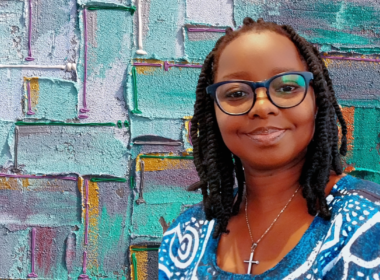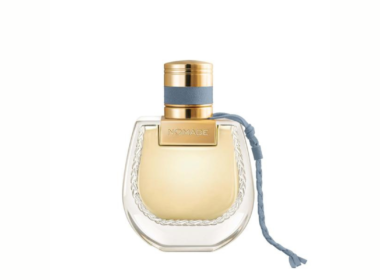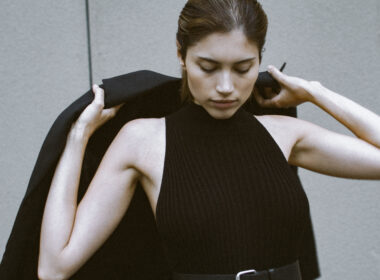Margarita Howis, a creative rebel and global artist, has lived in seven countries, evolving into a staunch cosmopolitan. Rooted in the societal conditioning of 90s Russia, Margarita broke free to become a global citizen, preaching and inspiring others to embrace their authentic selves. Margarita’s artistic journey unfolded from art school to a degree in architecture. Now exclusively devoted to visual art, artists work and exhibit globally through galleries in Copenhagen, Paris, Montreal, Miami, and New York. Moreover, she engages in fashion collaborations, paints murals, facilitates creative workshops, mentors creatives, and speaks at conferences from the global Soho House community to United Nations Headquarters. Margarita’s research and artistic exploration are rooted in the observation of cultural differences and the common human desire to break free from societal constraints. As our FAB ART ICON, her artistic crusade inspires us to embrace our authenticity and celebrate the boundless possibilities of creative expression.

FAB: Your journey as an artist has taken you across seven countries, each with its own cultural influences. How has this global exposure influenced your artistic style and thematic exploration?
Margarita Howis: Moving across different countries has been a transformative journey, exposing me to diverse cultures and perspectives that have deeply influenced my artistic research and style. This global exposure dissolved societal stereotypes that got ingrained in me while growing up in 90’s Russia, teaching me to respect and celebrate our differences. It inspired my mission to empower others to embrace their true selves, reject societal pressures, and embark on their own journey of self-discovery through art. I find inspiration in people and stories, and my work reflects the beauty of diversity and the strength found in authenticity, resonating with those who dare to challenge conventions and embrace their uniqueness.
FAB: From architecture to visual art—quite a leap. What prompted this shift, and how does your background in architecture inform your artistic practice today?
Margarita Howis: Transitioning from architecture to visual art was a natural evolution driven by a desire for creative fulfillment. While my background in architecture provided a strong foundation, I found myself craving a more expressive outlet for my creative calling. Today, my architectural background informs my practice primarily by keeping a sense of structure—both in artistic expression, such as composition and colours, and also in running the business. This background has equipped me to manage multiple tasks simultaneously, juggling various projects and aspects of running my own business, while allowing me to explore endless creative possibilities.
No Boundaries to What Can Be Achieved in the Artistic Journey
FAB: You explore themes of self-discovery, self-acceptance, and self-expression. What’s the connection between you and these themes? Why do they resonate with you so deeply?
Margarita Howis: The themes of self-discovery, self-acceptance, and self-expression have been like guiding stars in my journey as an artist, reflecting the ups and downs of my life. Growing up in post-communist Russia, where societal norms often suppressed individual expression, finding my own path wasn’t easy. It took me a while to break free from the expectations and stereotypes that surrounded me. As I travelled, studied, and worked in different countries, I explored various pursuits, but none truly fulfilled me. It wasn’t until I summoned the courage to live unapologetically as an artist that I found true fulfilment. Now, my goal is to inspire others to embrace their uniqueness and celebrate their own journey of self-discovery.
FAB: You’re known for seamlessly blending realism with experimental, abstract motives in your work. How do you strike a balance between these seemingly disparate styles, and what do they each contribute to the narrative of your art?
Margarita Howis: Mixing realism with abstract experimentation is like finding a balance between what’s real and what’s open to interpretation. Realism helps me capture the emotions of my subjects, making them vivid and alive, while abstract elements allow me to play with colours and shapes, creating a more imaginative experience. Together, they merge to form a unique artistic journey, inviting viewers to engage with both the familiar and the imaginative realms, resonate, raise emotions, and hopefully remember the artwork.
FAB: Some argue that traditional painting has been overshadowed by digital art forms in recent years. Do you believe that traditional painting still holds relevance in today’s art world, or is it being eclipsed by digital media?
Margarita Howis: Absolutely! While digital art has gained immense popularity recently, traditional painting still prevails in today’s art world. There’s something magical about the tactile experience of brush on canvas—a rawness that digital media can’t quite capture. Traditional painting embodies the artist’s soul, a genuine connection that resonates with viewers on a deeper level. In a world dominated by screens, there’s a unique energy to experiencing art in its physical form, reminding us of the timeless beauty of analogue expression amidst the digital wave.
Art has the power to provoke, inspire, and challenge societal norms, and it’s essential to protect that freedom to cultivate a diverse and vibrant artistic community.
Margarita Howis
FAB: Let’s talk about the business of art. Art auctions often fetch exorbitant prices for works by renowned artists, while emerging artists struggle to make a living wage. Do you think the art market is inherently elitist and inaccessible to emerging talent?
Margarita Howis: The art market can be tough for emerging artists like me to crack. It often feels like speculation drives the industry, making it hard for real talent to shine through. Sometimes, it seems that connections and luck play a bigger role than actual skill or creativity. But despite these challenges, with social media and digital platforms, there’s more democratic opportunity for artists to showcase their work and reach wider audiences. This gives emerging artists like myself hope, as it offers greater visibility and accessibility to our talent and creativity.
FAB: All around us, we hear and invest in art. The concept of art as an investment has led to the commodification of artworks, with some pieces valued more for their potential financial return than their artistic merit. Do you believe this focus on investment detracts from the true value of art?
Margarita Howis: Well, I agree that the commodification of art as an investment shifts the focus away from its intrinsic value, especially in contemporary art where determining true worth is speculative anyway. While it’s true that this emphasis on investment often takes away from the genuine artistic merit, it’s also a complex issue. Who decides what constitutes the true value of art? Moreover, with the recent explosion of NFTs, the concept of art as an investment has taken on a whole new dimension, further blurring the lines between artistic value and pure financial gain.
FAB: You identified as a creative rebel. Censorship, whether by governments, institutions, or individuals, raises questions about freedom of expression and the role of art in society. How should the art community respond to instances of censorship, and where do you draw the line between artistic expression and offence?
Margarita Howis: As a self-proclaimed creative rebel, censorship hits close to home for me. Transitioning from architecture to full-time artistry and running my own business has given me the freedom to embrace a bold and provocative approach to my art. This journey has empowered me to take risks and challenge industry norms, not only in my art but also in how I represent myself and navigate my career. For instance, I didn’t study art and therefore had the freedom not to follow a traditional path. I started selling my first art pieces at a local market under a bridge, and now I participate in prestigious events like Art Basel Week. I believe art has the power to provoke, inspire, and challenge societal norms, and it’s essential to protect that freedom to cultivate a diverse and vibrant artistic community.
FAB: Art galleries and dealers shape artistic trends and determine which artists receive recognition. This has been criticised as perpetuating a narrow and exclusive art world hierarchy. How can the art world become more inclusive and representative of diverse voices?
Margarita Howis: For a long time, art galleries and dealers have had a big say in setting artistic trends and deciding which artists get recognition. But let’s be real: the art world can sometimes feel like an exclusive club, shutting out diverse voices and ideas. Thankfully, new technologies and social media are shaking things up. Now, emerging artists have the chance to showcase their work and make their voices heard like never before. This shift challenges the traditional power dynamics, potentially loosening the grip of galleries and opening doors for more inclusive representation. In today’s modern world, I think being an authentic artist means exploring various avenues and mediums beyond brush and canvas, such as fashion, design, and digital platforms, to reach the right audience and foster greater diversity in art.
Transitioning from architecture to full-time artistry and running my own business has given me the freedom to embrace a bold and provocative approach to my art
Margarita Howis
FAB: With collaborations with notable brands like House of Bartholomew and Nikolaj Storm. How does fashion intersect with your artistic vision, and what does it add to the cultural movement you’re building?
Margarita Howis: Fashion has always been a passion of mine, and I see it as a powerful form of self-expression. For me, dressing up is not just about looking good; it’s about manifesting your beliefs and personality to the world. That’s why, when it came to collaborating with designers and expressing my art through wearables, it felt like a natural fit. Choosing brands like House of Bartholomew in NYC and Nikolaj Storm in Copenhagen was driven by shared values and mission; both bold, authentic streetwear brands align perfectly with my artistic statement, which is all about empowerment and individuality. For example, with Bart, founder of House of Bartholomew, we participated in multiple runways during fashion weeks in NYC and Paris and hosted events together during Art Basel in Miami, all aiming to build culture and community around our creations.
Margarita Howis: My latest mural at the NOOM, titled “Embracing Differences, Building One Tribe,” celebrates diversity, unity, and communal living. Inspired by NOOM’s commitment to wellness, sustainability, and diversity, the mural spans over 5 by 5 metres and features five distinct faces representing different ethnicities, races, and ages, painted in warm earthy tones with accent colors. Collaborating with architects Pedrajo + Pedrajo Arquitectos, we aimed to reflect NOOM’s values and ethos through transformative art. Ultimately, this mural serves as a reminder that, despite our differences, we are all part of the same tribe, and by celebrating our uniqueness and coming together, we can create a brighter and more inclusive world for everyone.
FAB: With events like the Colorflow Ink Workshop bringing together thousands of participants, what do you hope participants take away from these workshops, and how does art serve as therapy in your view?
Margarita Howis: The Colorflow Ink Workshop is a deeply personal endeavour for me, rooted in a belief in the healing power of colours and the transformative nature of artistic expression. Essentially, it’s an abstract art workshop where I guide participants in creating their own unique pieces of art using coloured ink as a medium. The experience is designed to engage participants and reconnect them with their inner child, where time and space dissolve as they immerse themselves in the joy of painting. The workshops have proven to be successful, and I’ve had the opportunity to work with clients like L’Oréal, Pandora, Nestle, SOHO House, Deloitte, Microsoft, etc. Whether they’re creatives or complete beginners, participants walk away from these workshops feeling empowered, inspired, and connected to the transformative potential of creativity in their lives.”
FAB: Notable figures like Offset, Snoop Dogg, and Dani Leigh have recognised your work. How does it feel to have your art acknowledged by such prominent figures, and what impact does this recognition have on your artistic journey?
Margarita Howis: Having my art acknowledged by figures like Offset, Snoop Dogg, and Dani Leigh is incredibly meaningful to me, especially as I resonate deeply with hip-hop culture. This recognition empowers me and gives hope, showing that there are no boundaries to what can be achieved in the artistic journey.
Mixing realism with abstract experimentation is like finding a balance between what’s real and what’s open to interpretation
Margarita Howis
FAB: Current projects and future plans?
Margarita Howis: Currently, I’m immersed in a few projects—for example, a collaborative project with designer Nikolaj Strom, where we’re crafting a sustainable ready-to-wear summer collection that merges art and fashion seamlessly. This collection is an exciting exploration of creativity and sustainability, aiming to redefine the boundaries of wearable art. I’m also working on expanding my Colorflow Ink Workshop series to reach even more participants globally, aiming to continue fostering creativity, self-expression, and connection through art.
Fashion, Beauty, and Fitness with Margarita Howis
FAB: What is your morning skincare routine like?
Margarita Howis: My morning skincare routine starts with a cleanser and a hydrating toner. After that, I love to wipe my face with an ice cube for extra toning; it also wakes me up! Then I apply a serum and a lightweight moisturiser.
Margarita Howis: I love timeless classics like tailored blazers and leather jackets. They’re like the backbone of my wardrobe—variable, effortlessly cool, and guaranteed to elevate any outfit. Stay up to date on the newest in the world of Fashion, Arts, Beauty and Lifestyle; Follow FAB on Instagram.
FAB: How do you recover from muscle soreness after a tough workout?
Margarita Howis: As a Russian, when it comes to recovering from muscle soreness, my first instinct is always to head straight for the banya (sauna). It’s practically in our DNA to seek out that steamy heat for a quick fix!
Fun Zone: #FABFastFive
FAB: Would you rather have a month-long staycation or a week-long adventure?
Margarita Howis: Adventure, even if only week-long!
FAB: Which skill would you choose if you knew you could master it in a year?
Margarita Howis: I’d dive into the world of music production, particularly focusing on creating hip-hop beats. Being able to craft infectious rhythms and melodies that move people’s souls!
FAB: If you could be any animal, which one would you be?
Margarita Howis: Wild Cat!
FAB: Chocolate or candy?
Margarita Howis: Chocolate
FAB: What was your dream job when you were a kid?
Margarita Howis: Becoming an artist
Photo Credit: Alexandra Perpick, JRobertson, Kamilla Bryndum

















































